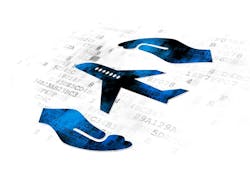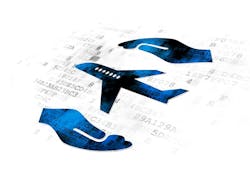FAA selects Astronautics for aircraft system information security and protection project
MILWAUKEE, Wis., 16 Sept. 2016. Federal Aviation Administration (FAA) officials sought an aerospace organization to research and develop a comprehensive approach to identify and assess potential aircraft cybersecurity threats as they relate to aircraft certification and continued operational safety. They found an industry partner in Astronautics Corp. of America, contracting the Milwaukee-based company to conduct initial research for aircraft system information security and protection.
The research project will include the development of an efficient, timely, and repeatable process that identifies system security vulnerabilities, threats, and safety risks, including risk-mitigation information. The researched approach will support the FAA’s development of aviation policies, regulations, and training requirements to ensure flight safety and the security of aircraft network systems from cyber-attacks.
“Astronautics is a leader in fielding airborne servers and connectivity equipment. Astronautics understands that safety and privacy of data transmitted to and from the aircraft is vital, and that is why Astronautics is also a leading provider of cybersecurity systems to the industry. We look forward to working with the FAA on this project,” says Astronautics Corporation of America President Chad Cundiff.
The endeavor will be completed in a three-stage process. The first stage includes developing a mature Safety Risk Assessment (SRA) framework. In this stage, Astronautics will adapt its pre-existing cybersecurity processes to support the implementation of the FAA aircraft system information security/protection and SRA framework.
During the second stage, the SRA methodology will be applied to model Aircraft Communications Addressing and Reporting System (ACARS) systems. ACARS is a digital datalink system for transmission of short messages between aircraft and ground stations via air-band radio or satellite. Based on the SRA subject results, Astronautics and the FAA will collaborate to refine the SRA methodology.
FAA needs more comprehensive approach to address cybersecurity in transition to NextGen
The Federal Aviation Administration (FAA) needs a better approach to securing and protecting air traffic control (ATC) information systems and aircraft avionics against cybersecurity threats, according to U.S. Government Accountability Office (GAO) officials in Washington. The GAO published a report (GAO-15-370), entitled “FAA Needs a More Comprehensive Approach to Address Cybersecurity,” outlining the agency’s security challenges and potential shortcomings.
Click here to read the rest of the article
The third stage includes applying the refined and approved methodology to a second SRA model that will be defined at a later time.
All work will be performed at Astronautics Headquarters in Milwaukee, Wisconsin, using systems and software engineers from the current cyber team and in-house development and cybersecurity labs. Astronautics will collaborate during this research and development effort with the FAA, FAA-designated organizations, and aviation and information security partners with whom Astronautics has established relationships.
“The selection of Astronautics to work on this project is validation of our decades-long investments in aircraft connectivity and cybersecurity for both civilian and military aircraft,” Cundiff says.
Astronautics Corporation of America, headquartered in Milwaukee, Wisconsin, is a global leader in the design, development and manufacture of avionics equipment and systems for the commercial and military aerospace industry. Key product areas include electronic primary flight displays, engine displays, mission computers, electronic flight bags, and certified servers for airborne applications. Services include system integration and custom software for critical applications. Since its founding in 1959, Astronautics has been providing tailored engineering solutions to help clients achieve mission success.
Search the Aerospace & Defense Buyer's Guide
You might also like:
Subscribe today to receive all the latest aerospace technology and engineering news, delivered directly to your e-mail inbox twice a week (Tuesdays and Thursdays). Sign upfor your free subscription to the Intelligent Inbox e-newsletter at http://www.intelligent-aerospace.com/subscribe.html.
Connect with Intelligent Aerospace on social media: Twitter (@IntelligentAero), LinkedIn,Google+, and Instagram.
Intelligent Aerospace
Global Aerospace Technology NetworkIntelligent Aerospace, the global aerospace technology network, reports on the latest tools, technologies, and trends of vital importance to aerospace professionals involved in air traffic control, airport operations, satellites and space, and commercial and military avionics on fixed-wing, rotor-wing, and unmanned aircraft throughout the world.


